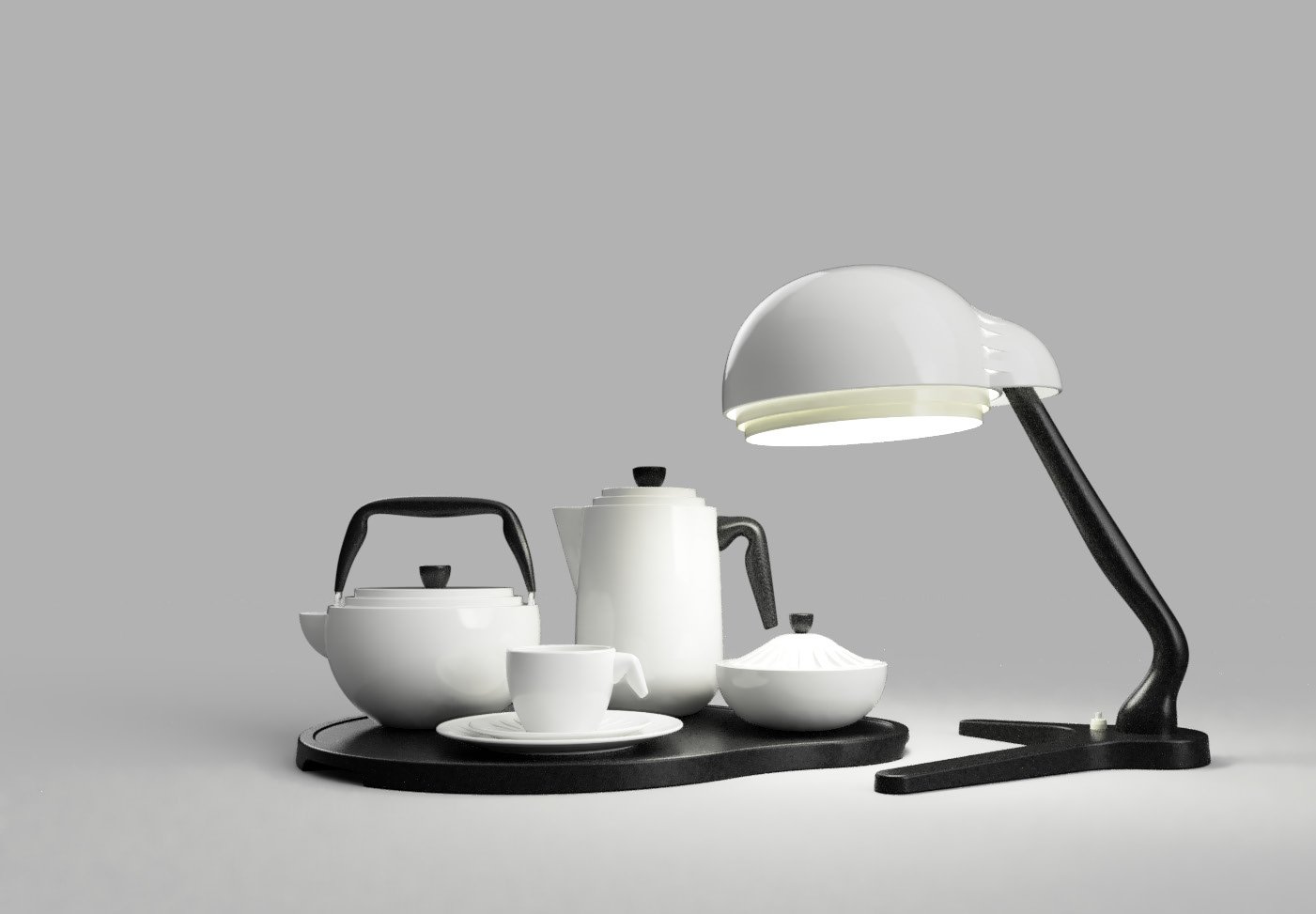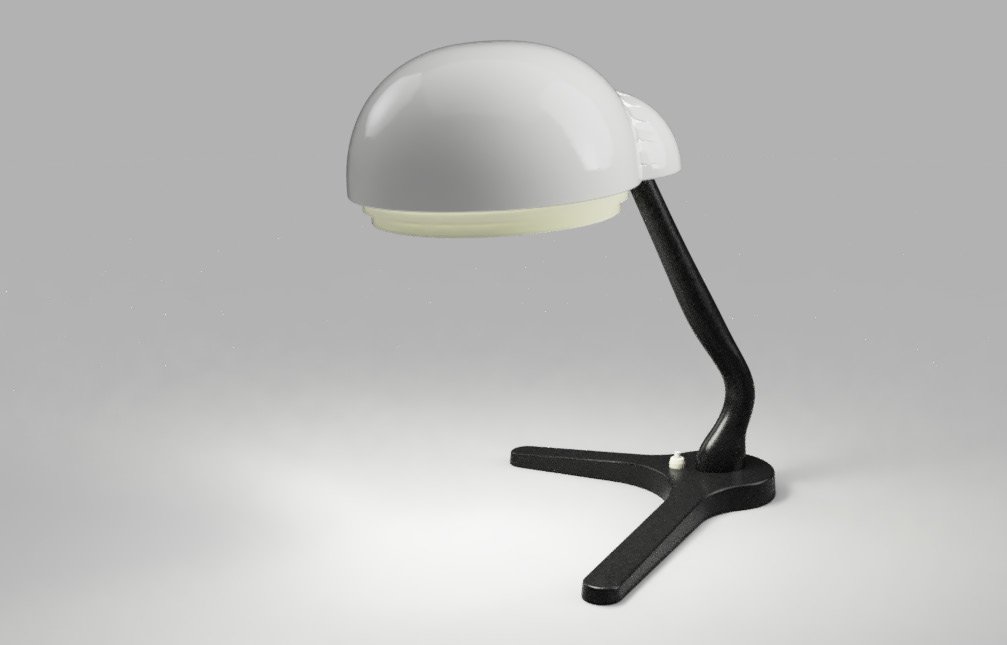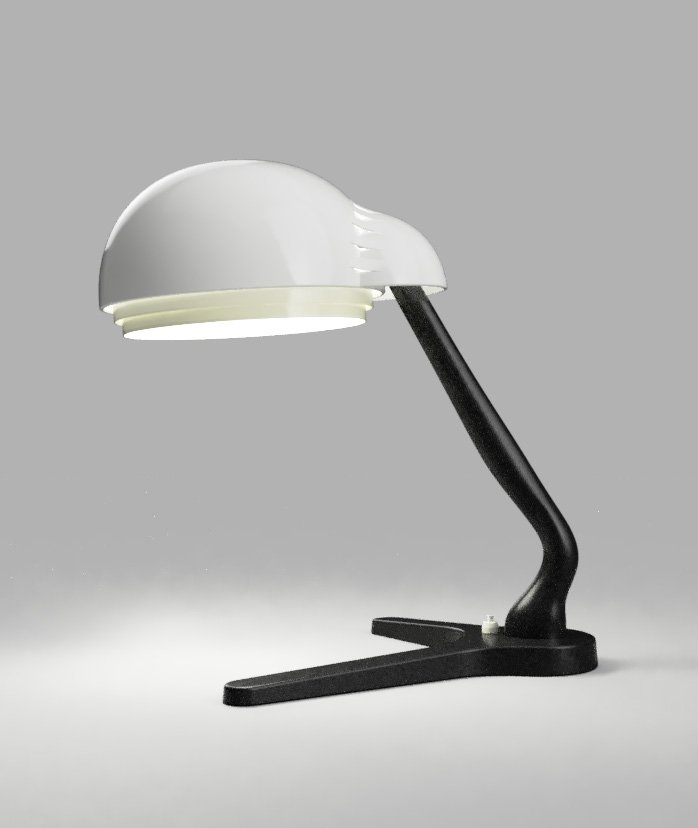
Coffee & Tea Set for A704 Desk Lamp by Alvar Aalto.
Product DesignThis set is designed as a new family to Alvar Aalto’s A704 Desk Lamp from 1950.
Bas van Beek suggested to me the idea of extrapolating the form language of an existing design to a whole family of objects in an approach he calls design morphology.
The A704’s muscular arm is full of tension and intrigue, it is clearly visible how the arm is straining to hold up the lamp shade.
The lampshade itself is another beautiful feature, the heavy dome shape is ‘hiding’ the lightbulb inside, the light opening towards the bottom indicated by the two geometric rings. The contrast between the heavy geometrical head of the lamp that is held up by the organic structure of the arm and the asymmetrical feet also shows in the materiality: cold steel against warm leather.
Amongst all of the unique features of the lamp, there is one unique detail that stands out most: the way in which the two domes of the lampshade are joined together. This feature made up of metal strips that bridge the gap between the domes, provides a way for the hot air to escape the lampshade. Some of the collision between the domes visible in the gaps between the strips is kept, while at the same time there is the smooth transition of the strips themselves. A beautiful contrast within a feature that is merely a connection between two body parts. This lamp is a complete body, elegant and simple yet full of detail. From here I started my extrapolation to create a new family for this lamp to be part of.

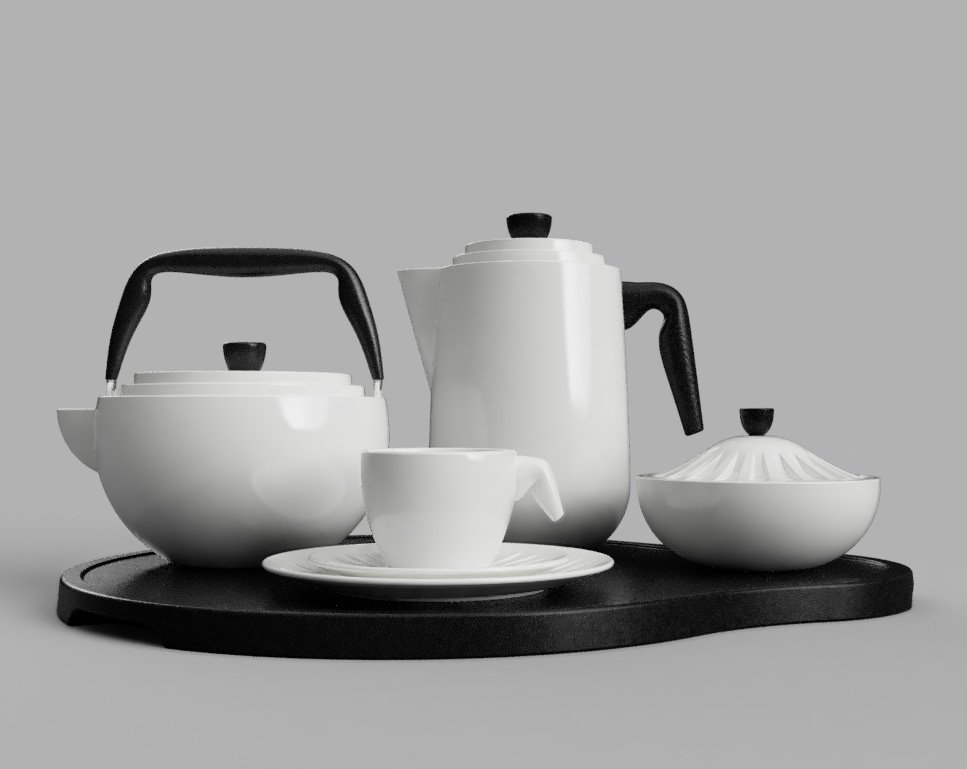

The digital recreation of a pre-digital object proved to be quite the challenge. With only having a handful of images to work from and only one measurement: a total height of 370 or 380 millimeters (I found two different sources for this, both seemed to be equally as plausible so I took the average of these two values: 375mm). The arm was quite easily recreated from two different reference photos. The big challenge was the characteristic connection between the two domes of the lampshade. These metal strips appear to be bent into shape until they spanned the gap, but for the digital model I needed to make this feature a little more even in order not to overcomplicate the model. My first try lost too much of the original identity of the feature but in later tries I managed to replicate the organic nature of the shape of these metal strips, all from one pattern.
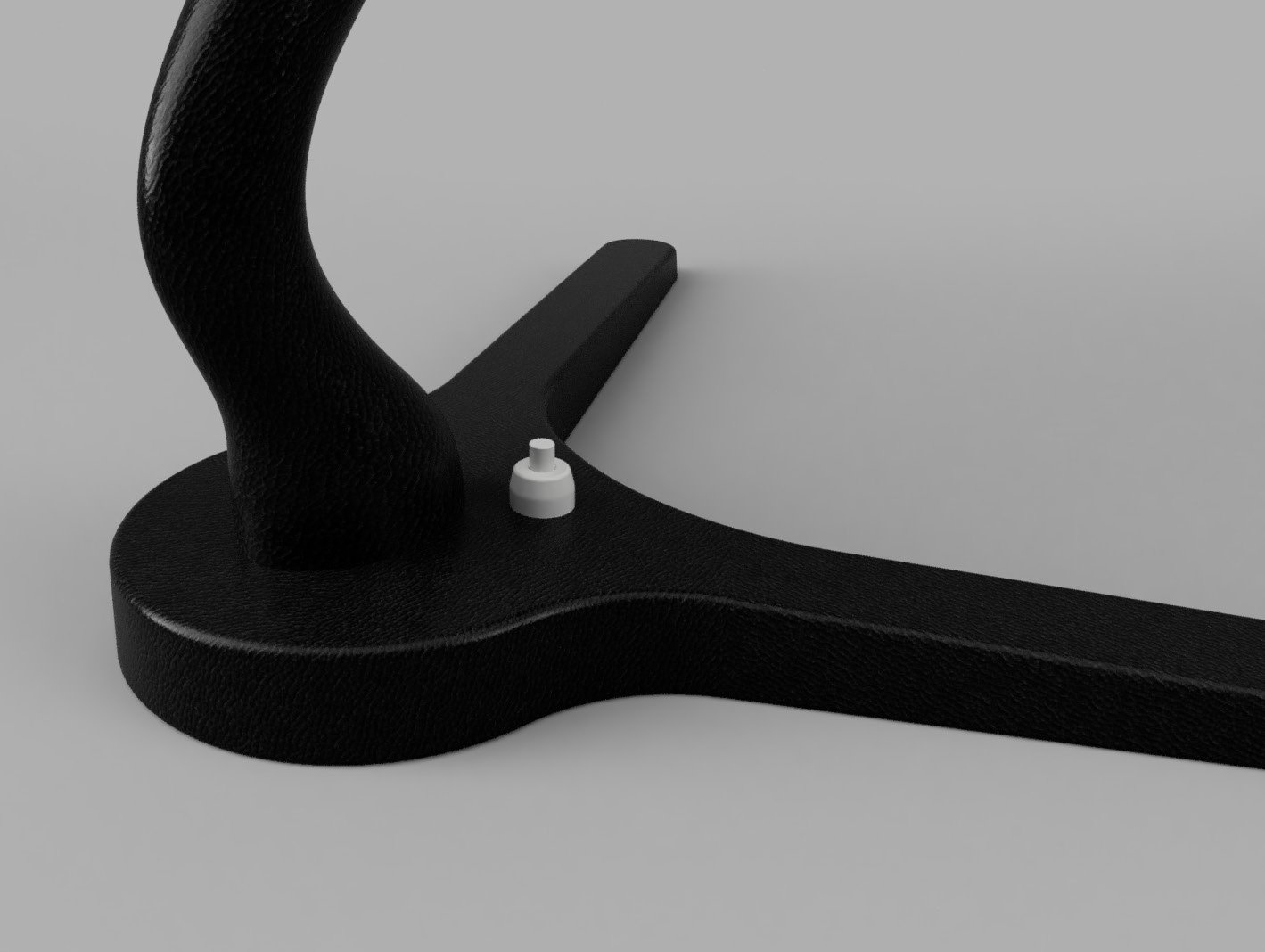
Another challenge was finding the exact dimensions and proportions for the foot of the lamp. No image from the exact footprint of the lamp was available, which meant that I had to take the closest image, and distort it until it matched with my other reference images and then build the model around that. Then I checked my model against all other images that I could find of the lamp to see if my interpretation of the asymmetric foot was accurate. After some final tweaks I’m positive that the current CAD model is a truthful recreation of the original.
